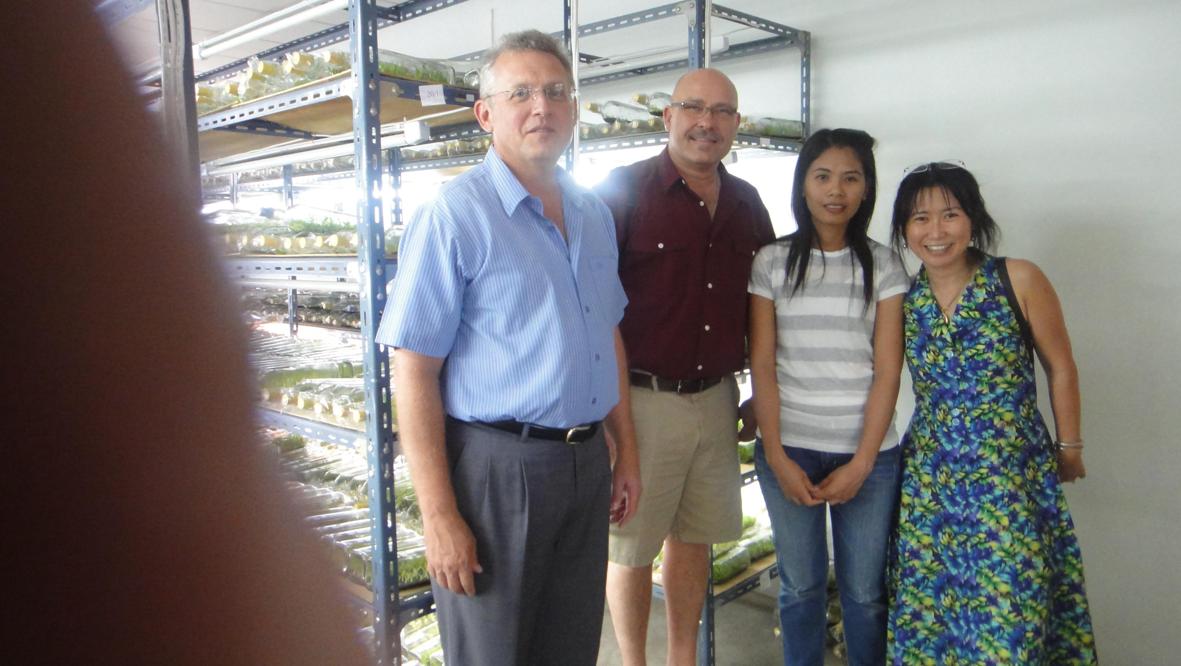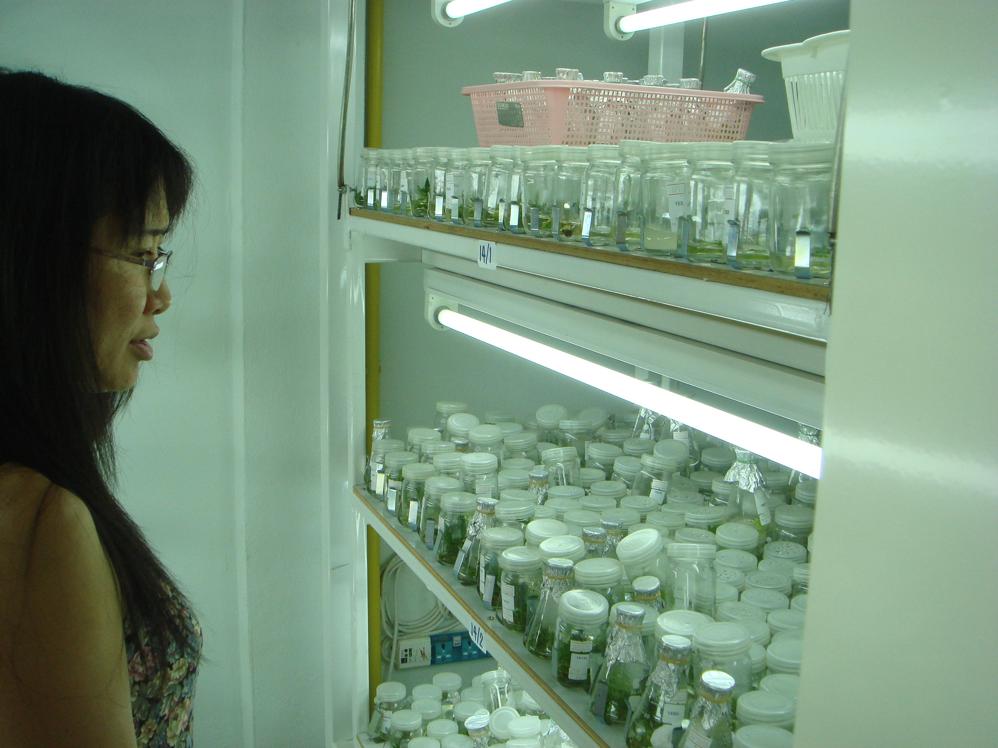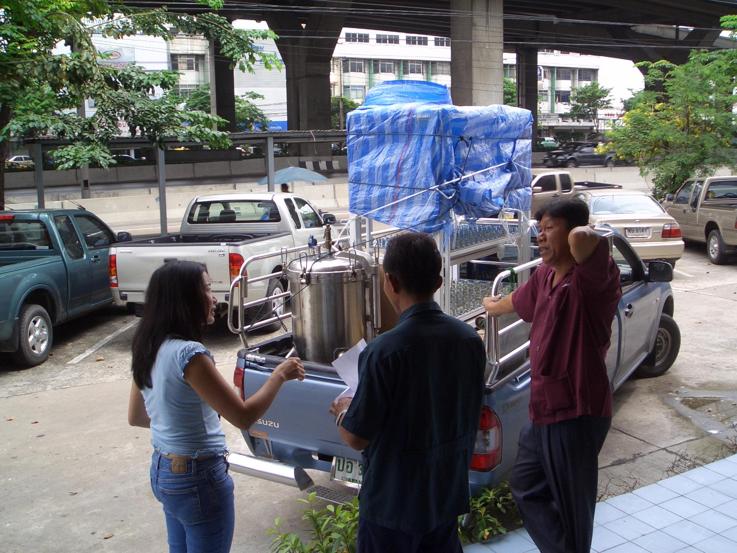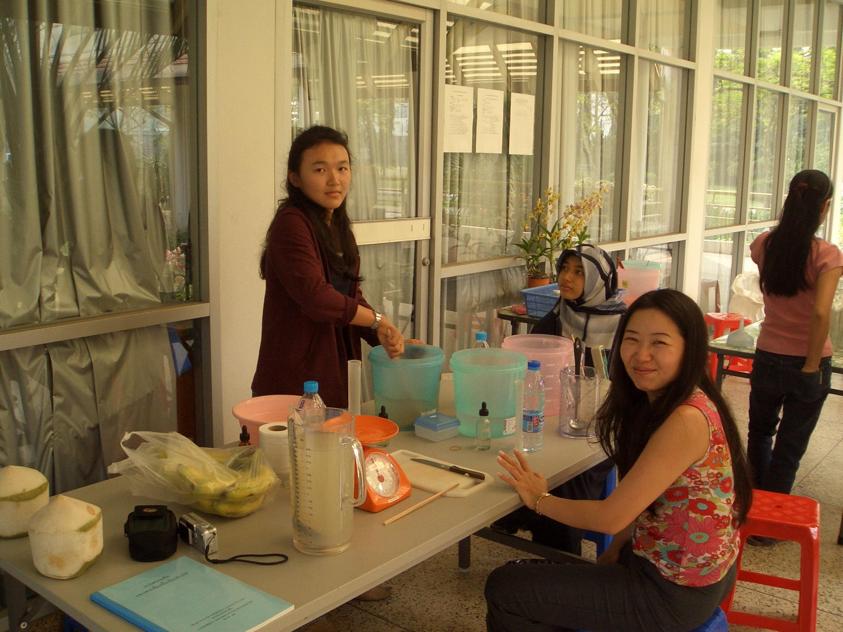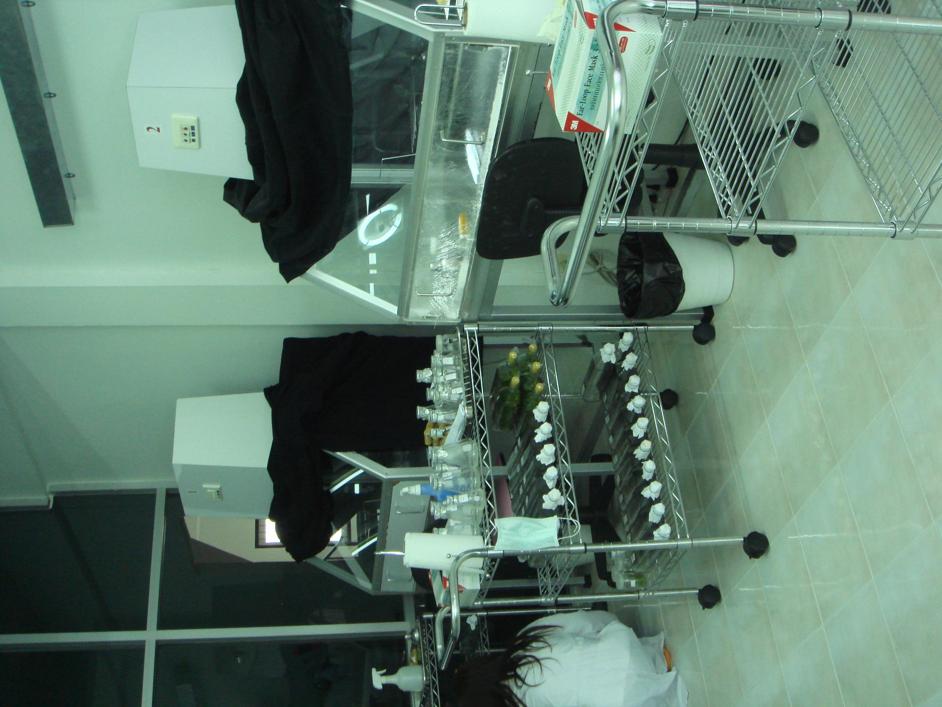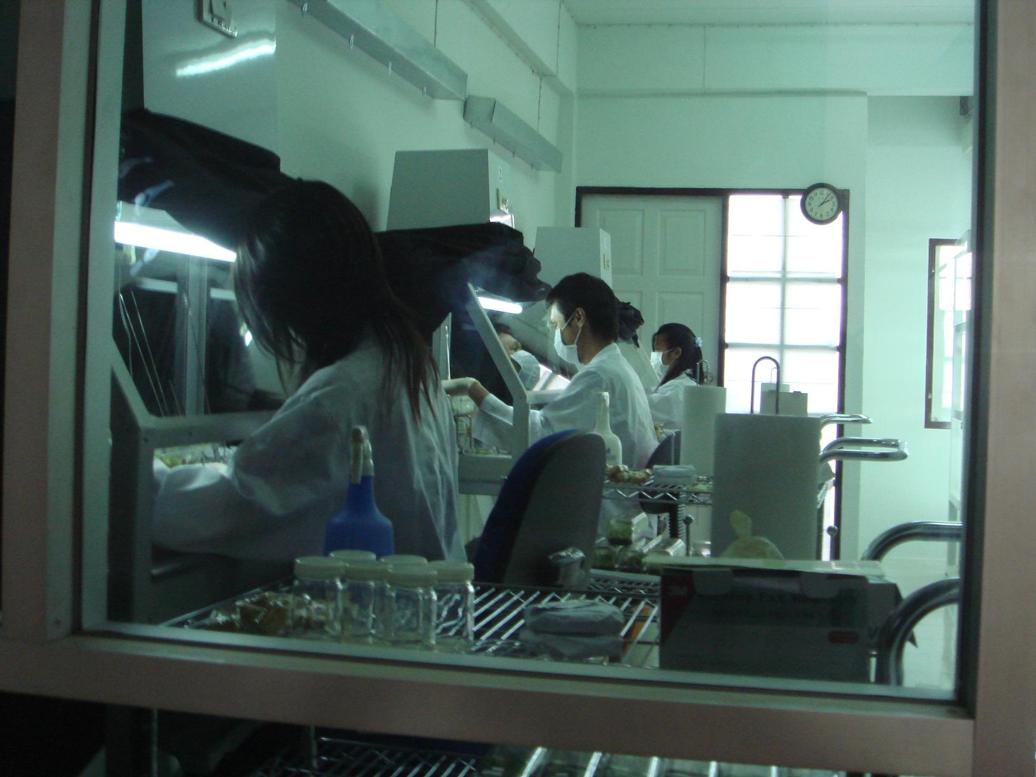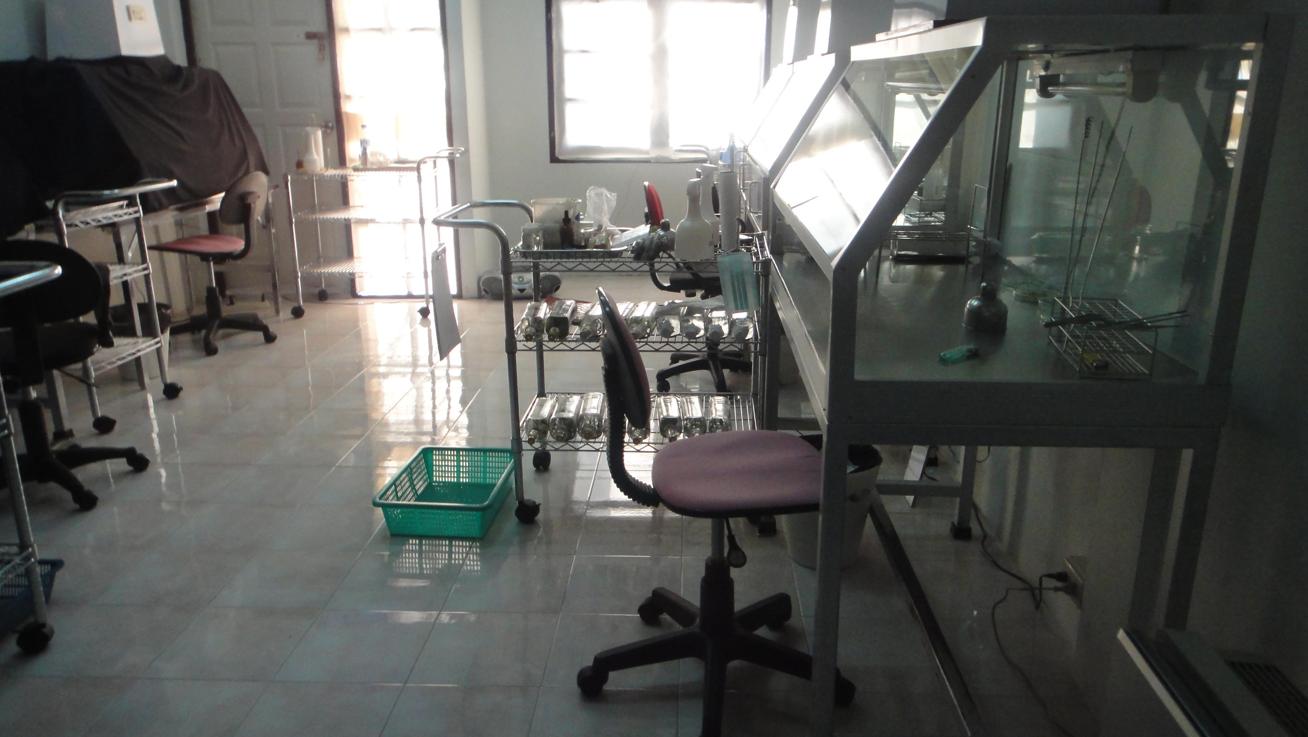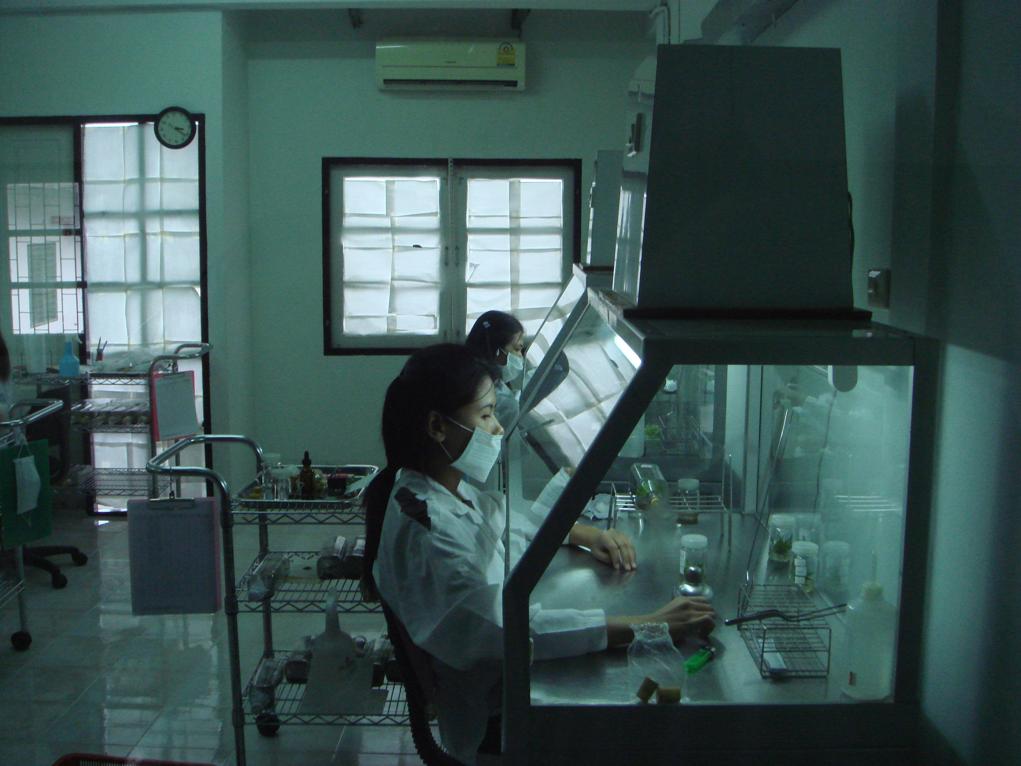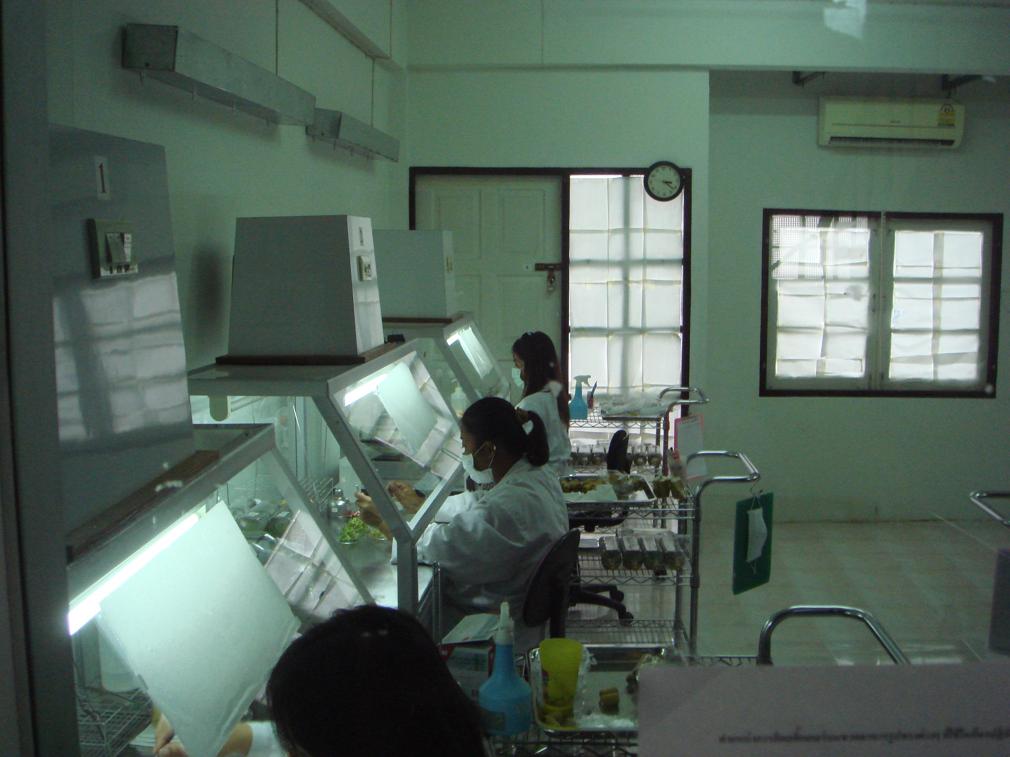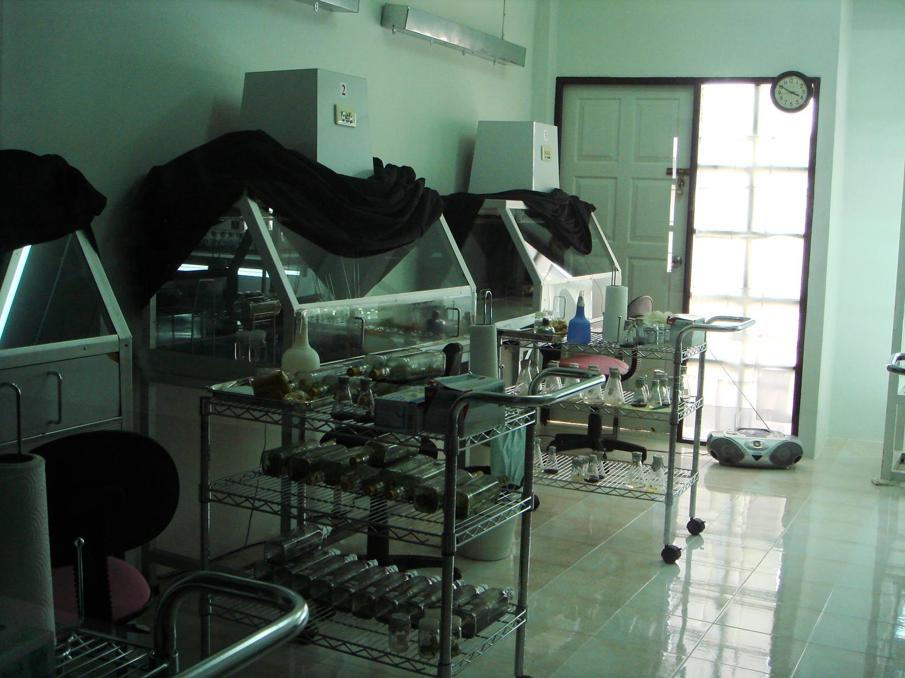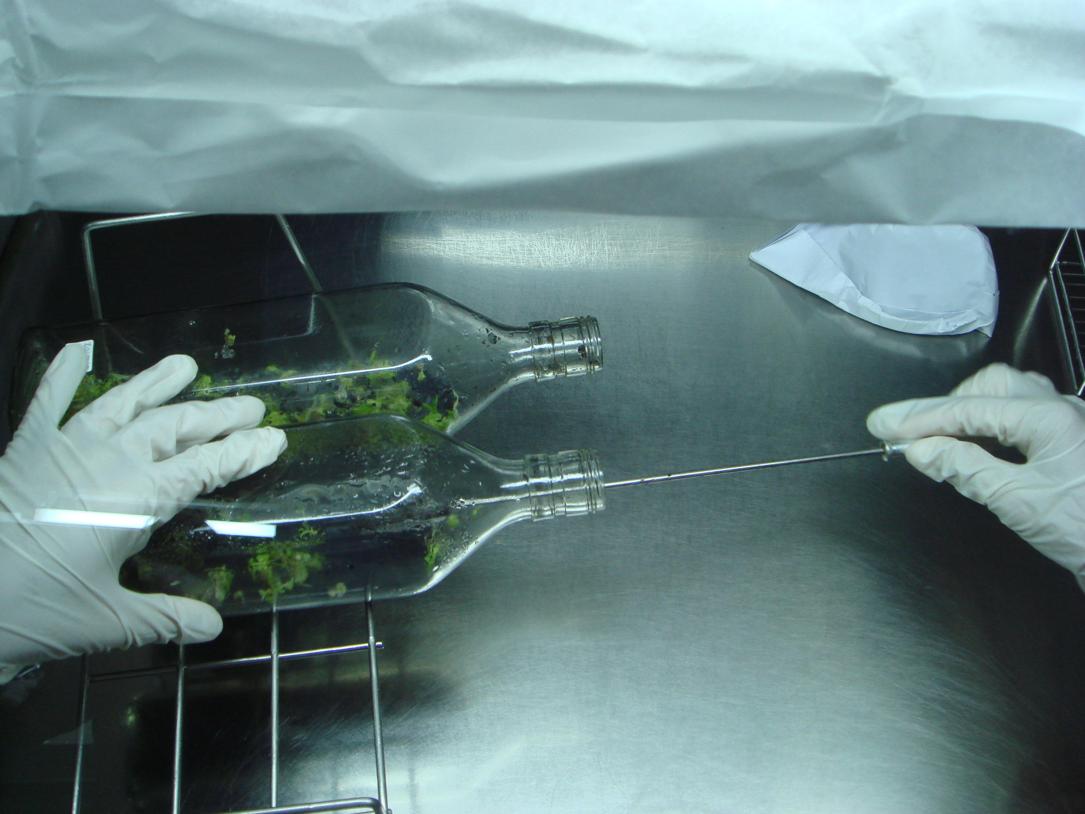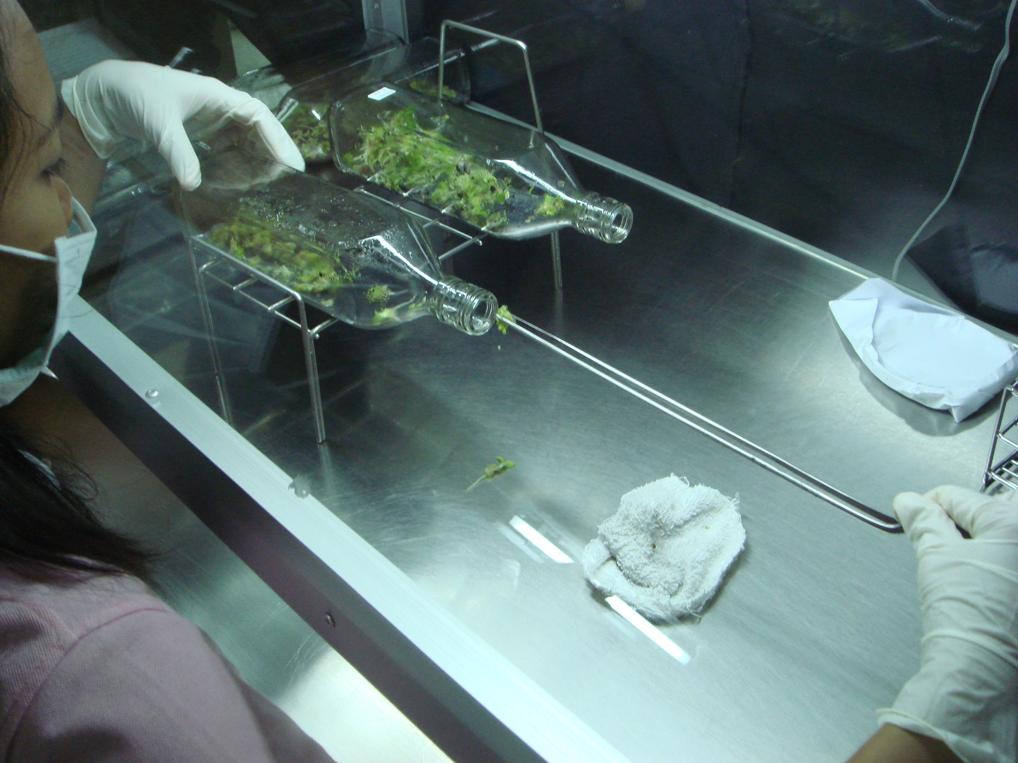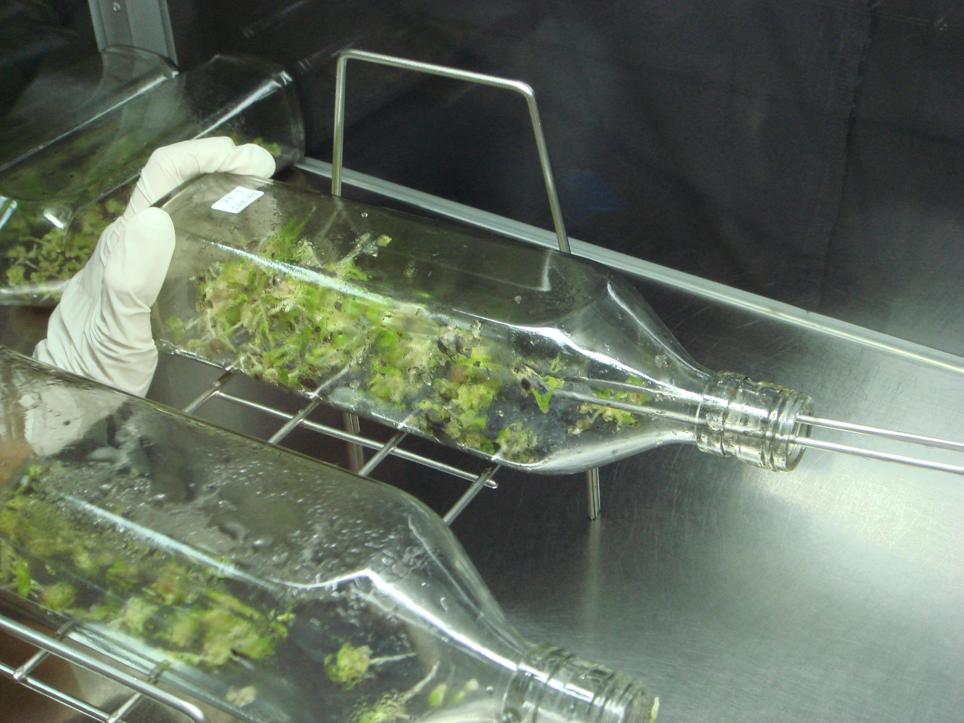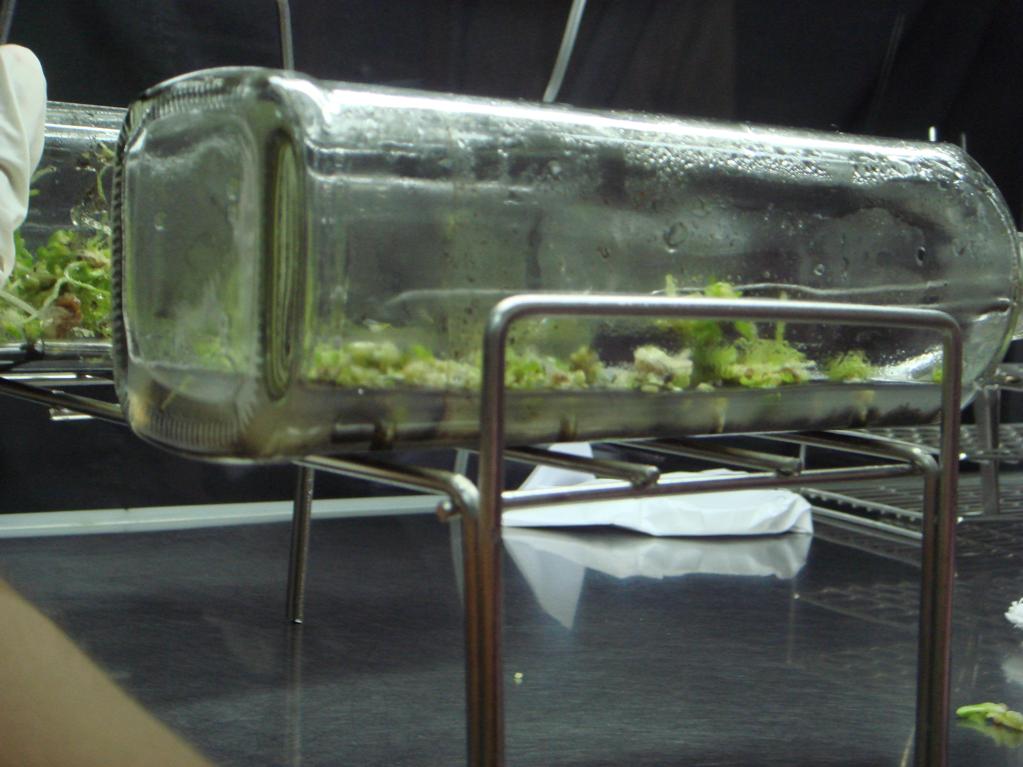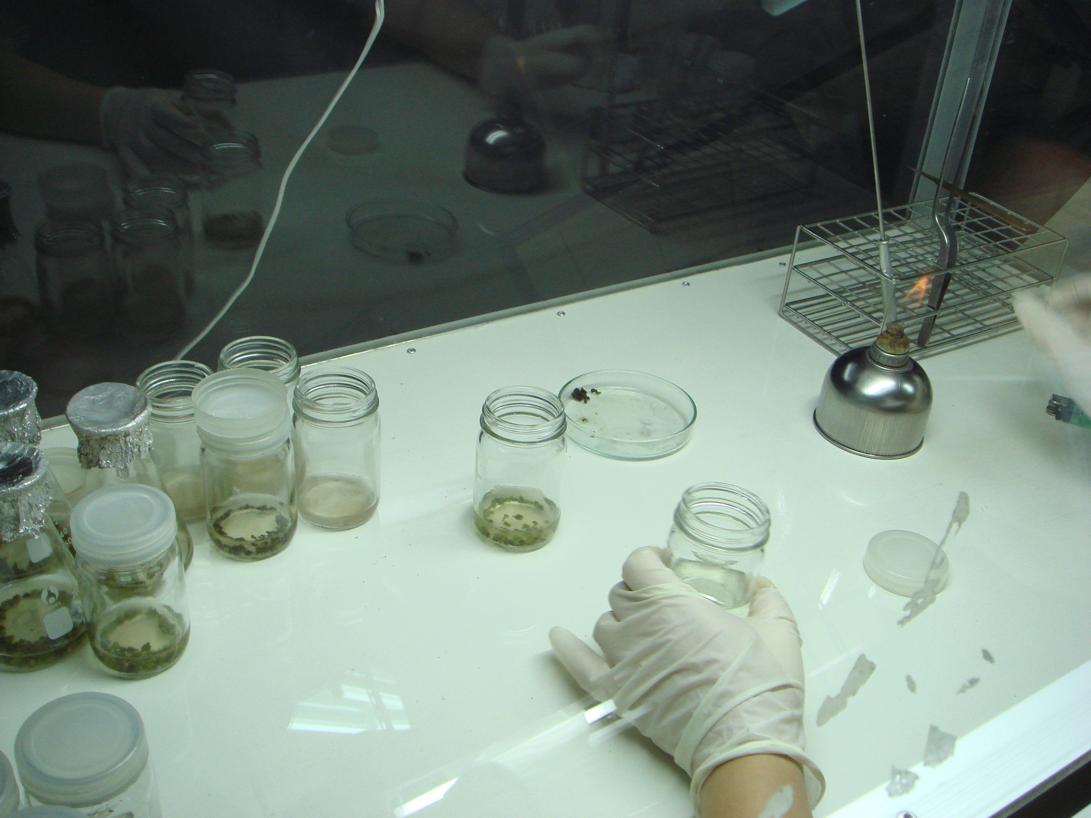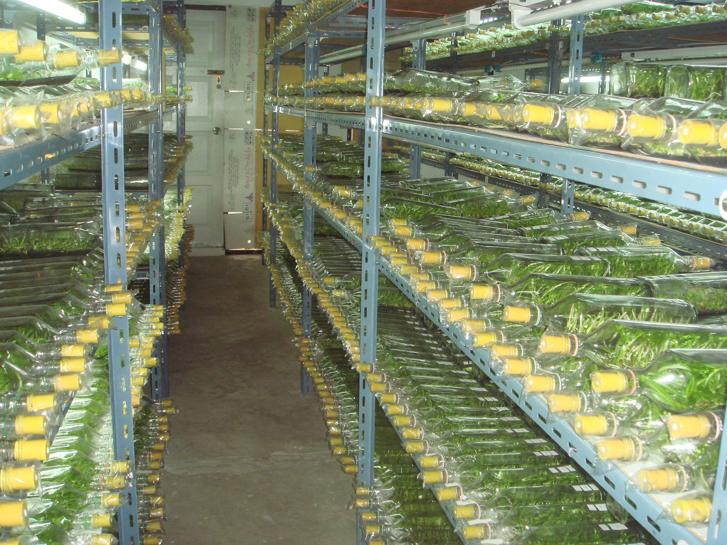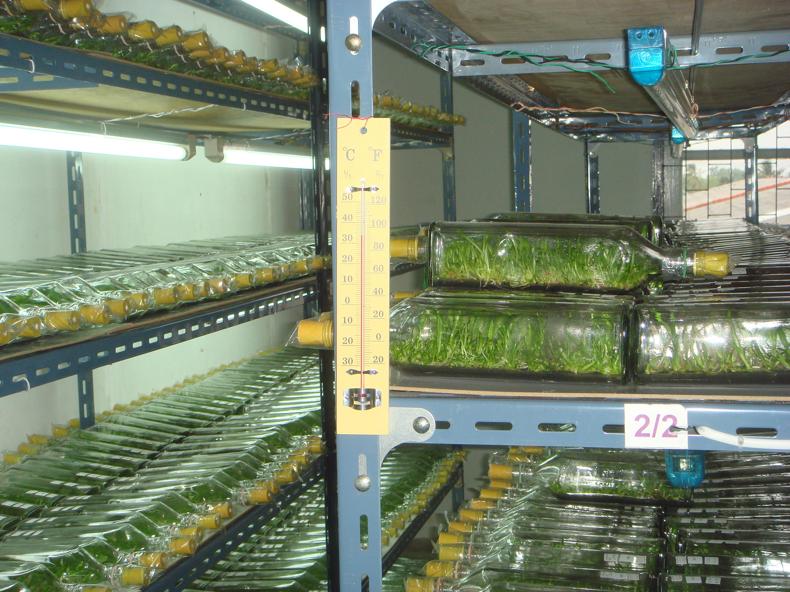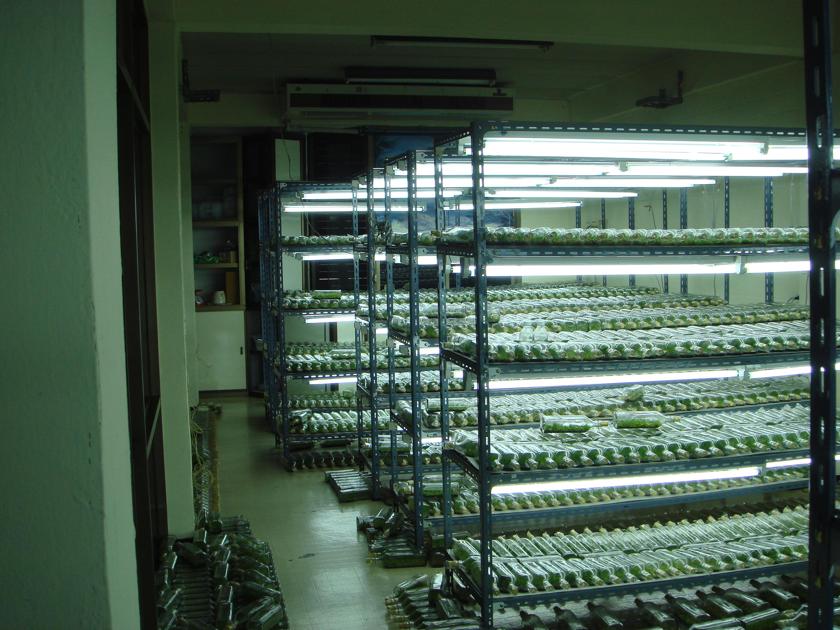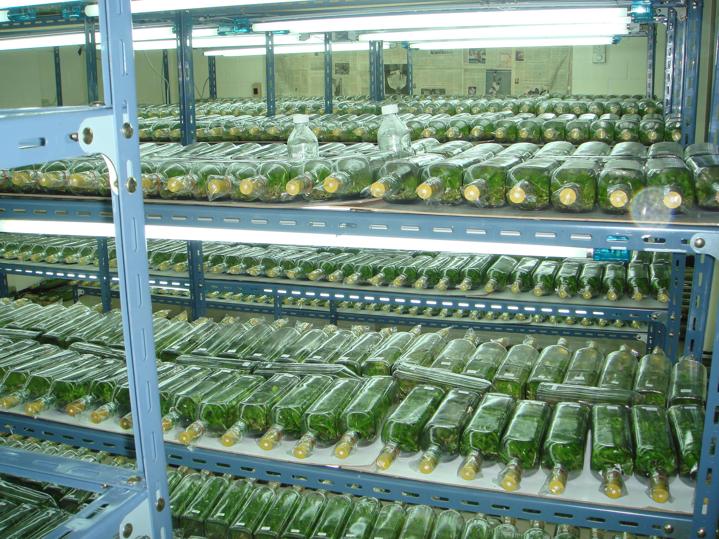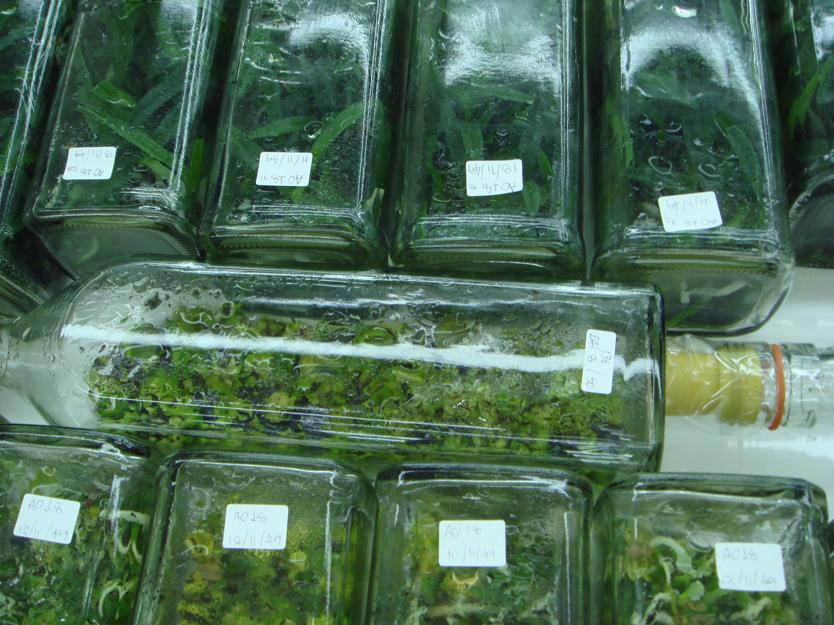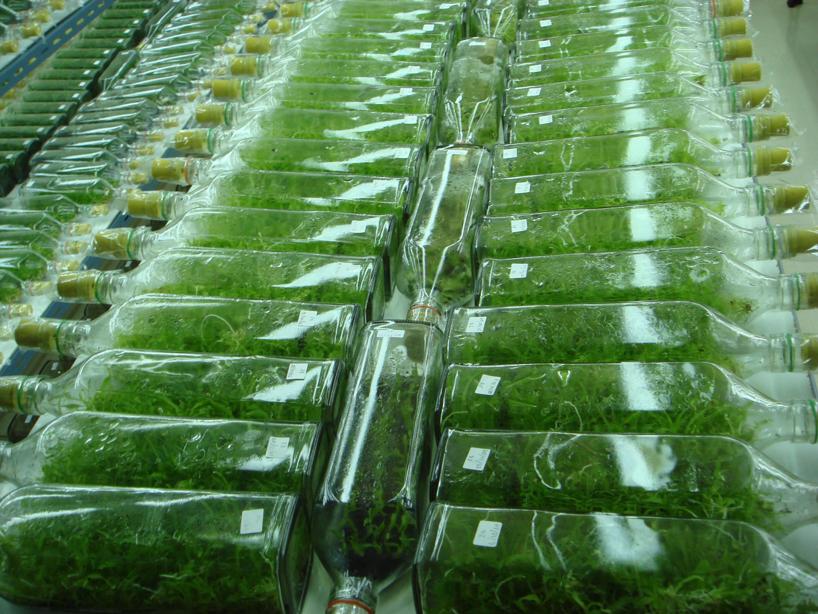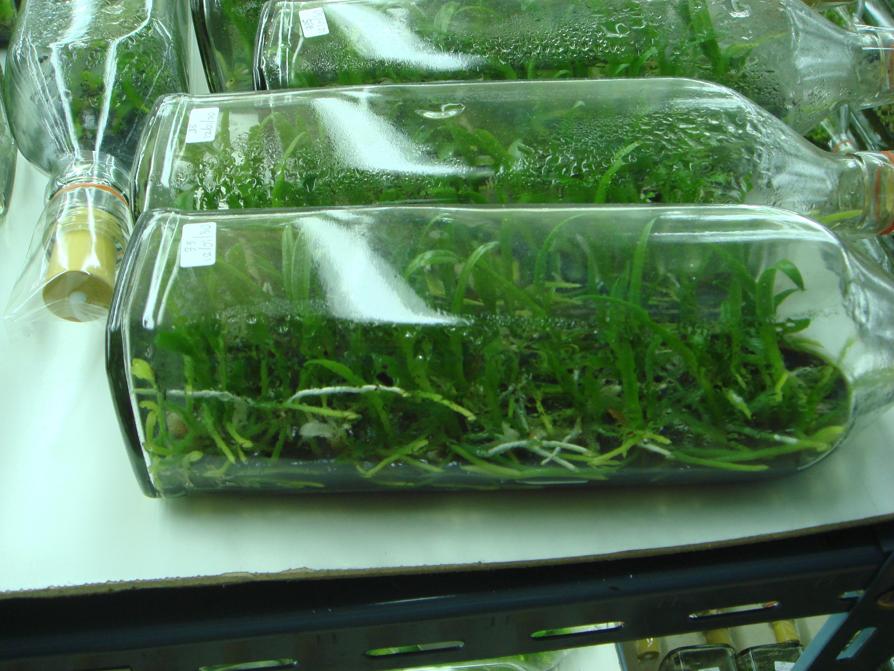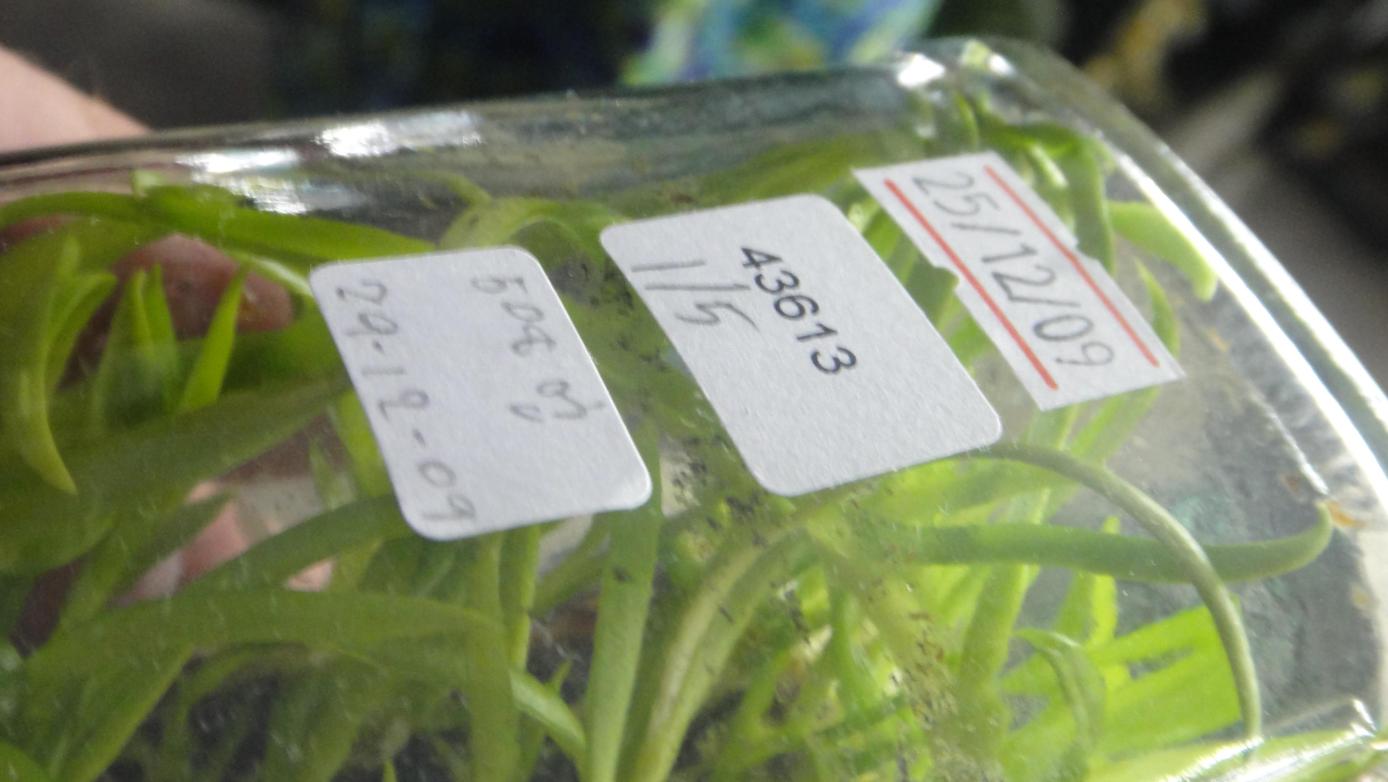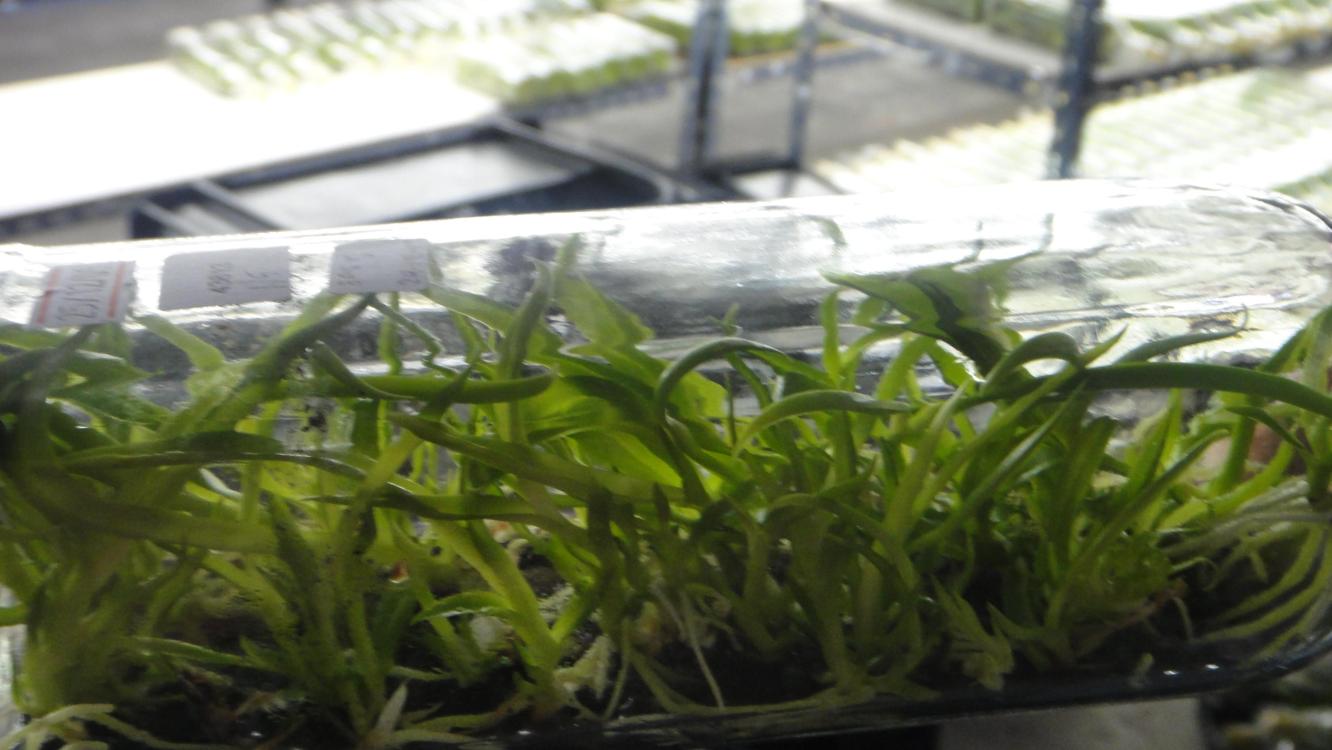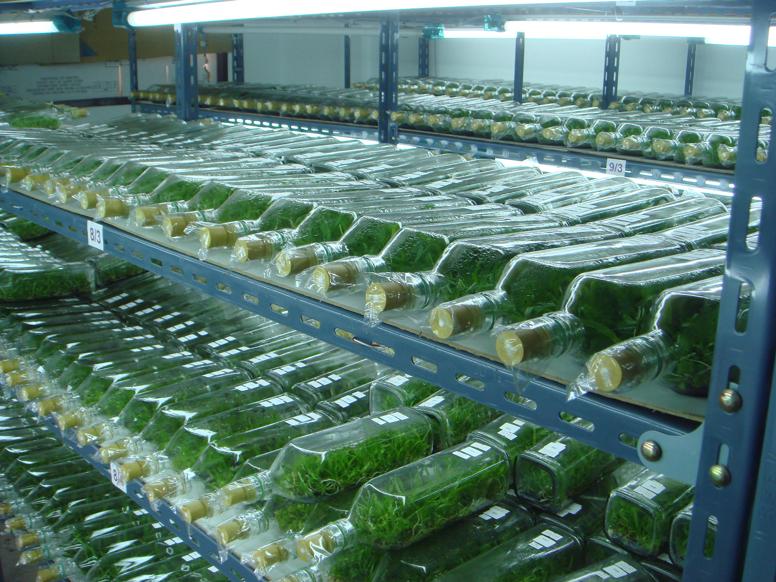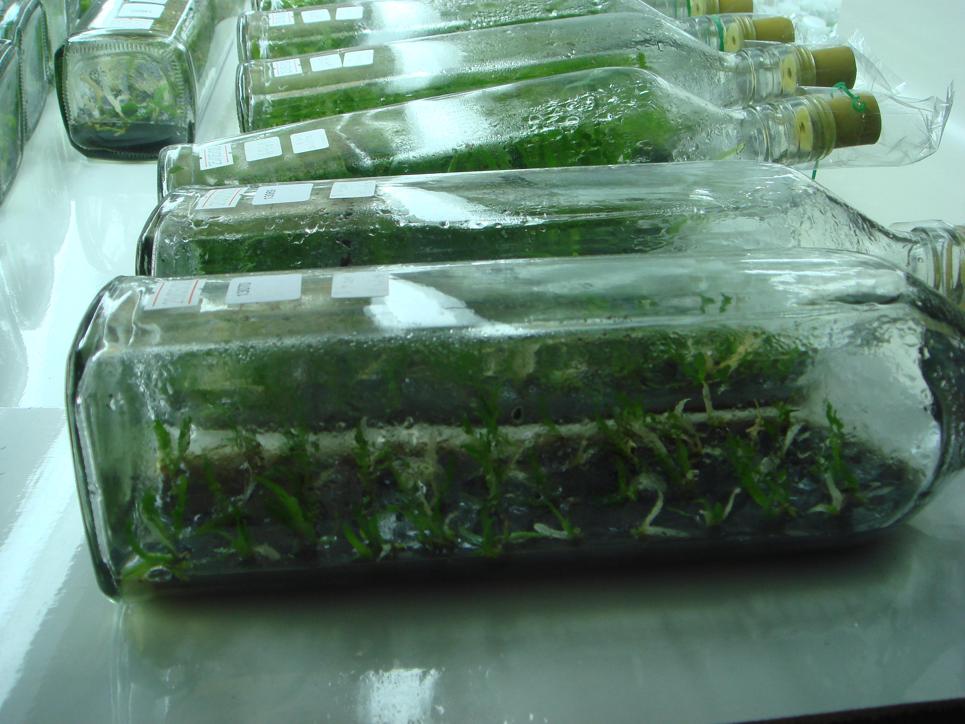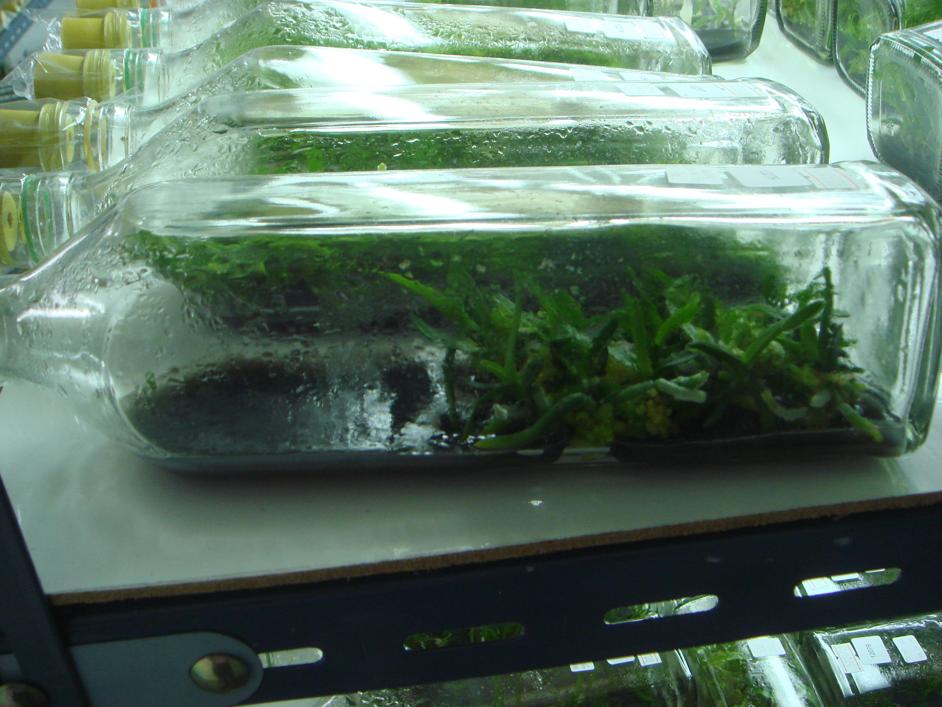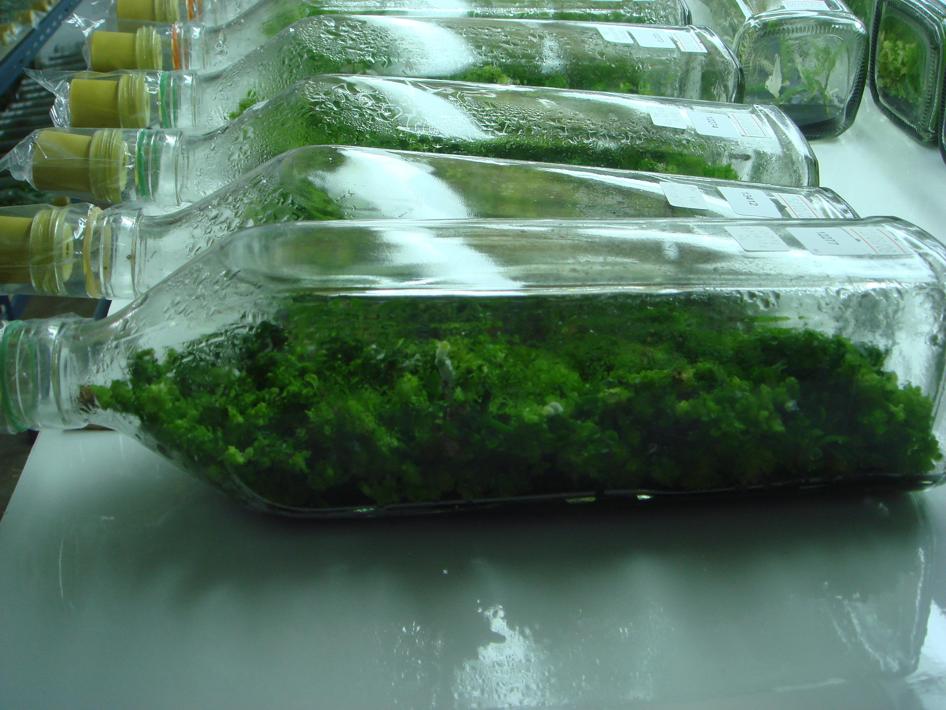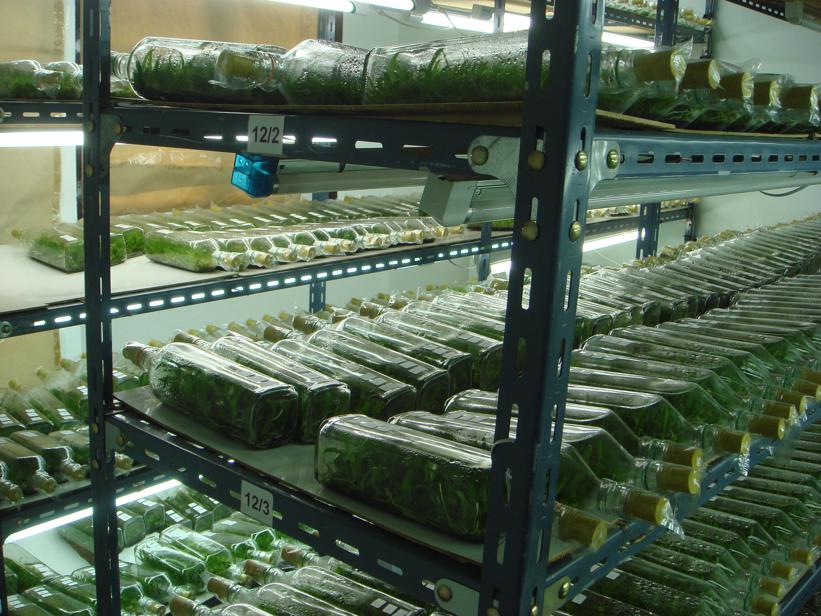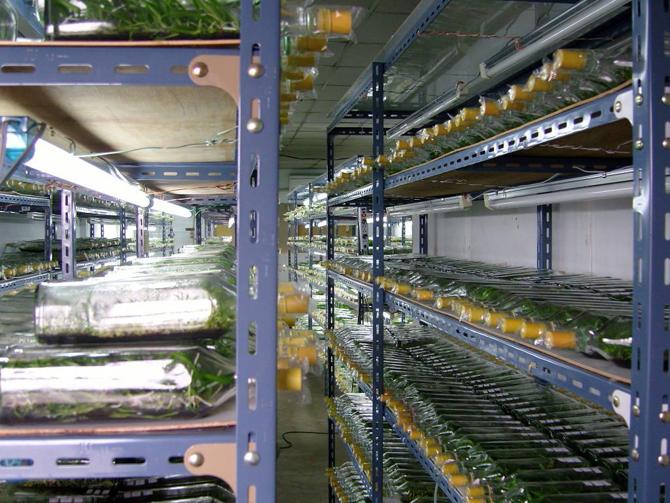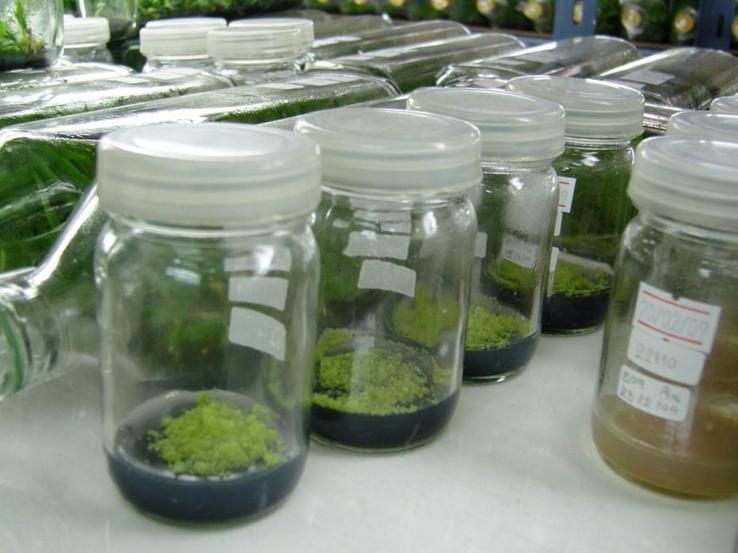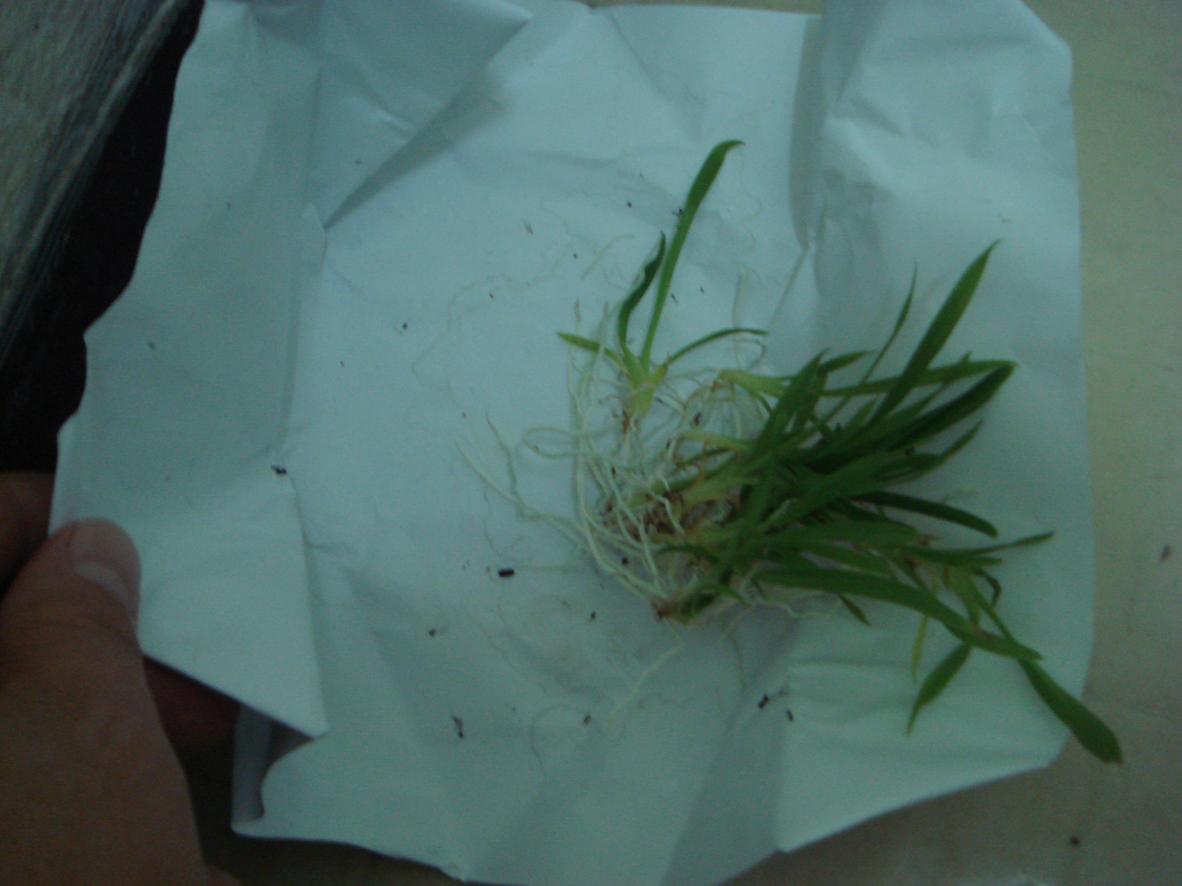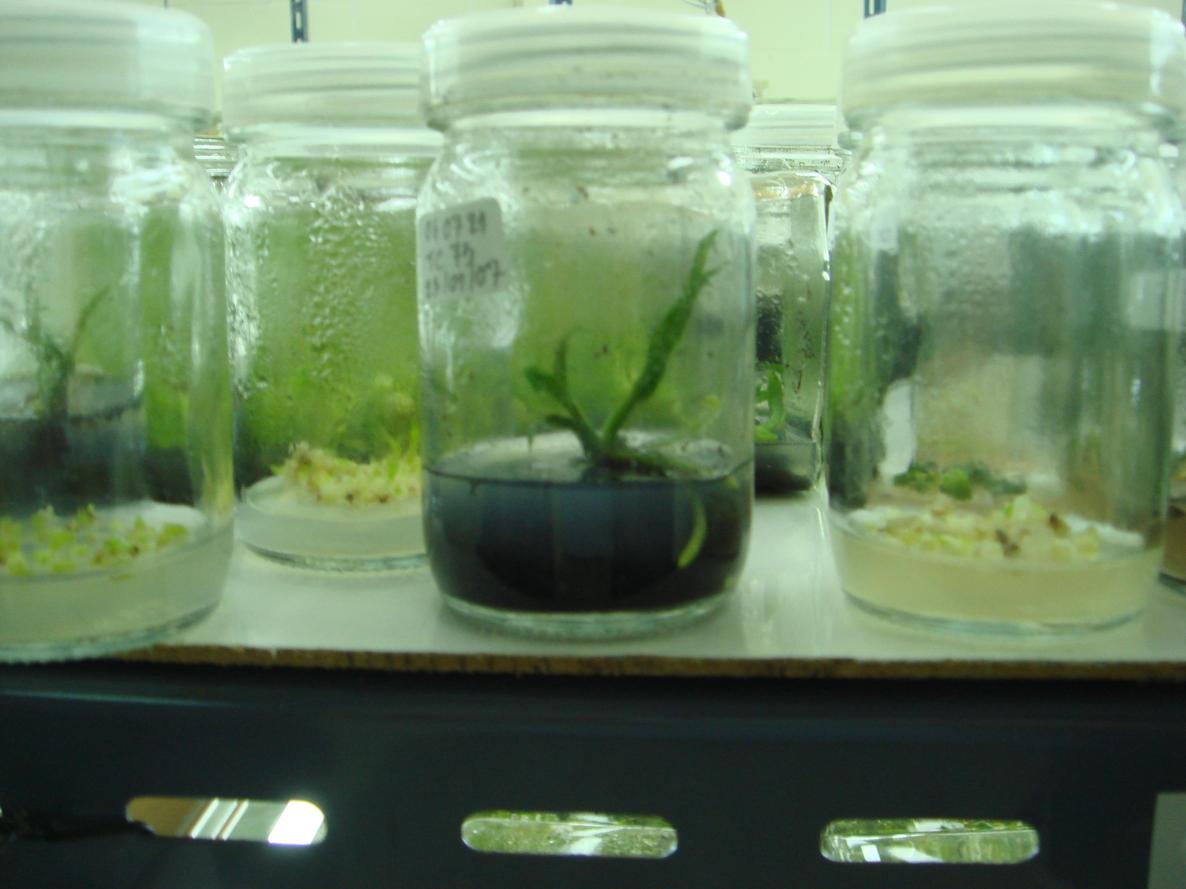Micropropagation by Tissue Culture Lab
Our flower business started with selling flowers. But, as soon as we began to expand, we knew we would need our own farm. In order to stock the farm , we needed thousands of plants. After buying some plants, we decided that it would be best to buy seedlings. After investigating the possible sources of seedlings, we decided that it would be better for us to produce our own seedlings.
Orchids are very unusual plants. Their seeds are microscopic, like particles of dust. Most commercially grown orchids are produced with cuttings. There are basically two types of cuttings: the macro (normal) sized cuttings and micro cuttings. Both are used, and both are clones of their “mother” plants.
Macro cuttings (see our Farm Page) take up a large space on the farm, and produce seedlings irregularly. Micro cuttings have to be produced in a “Clean Room” lab, with work done in specialized sterile conditions.
Opening the Tissue Culture Lab
When we started our Tissue Culture Lab, we had no experience, and only knew what we had seen from other labs we had visited with the expectation of purchasing seedlings or contracting production for us.
Our first step was to have our managers and supervisors trained, so that they would understand what was necessary. My wife, Vara, and one of her relatives took a private class at the top Agriculture University in Bangkok.
After taking the class, we purchased the necessary equipment and began to work.
Clean Room at the Tissue Culture Lab
Micropropagation by Tissue Culture of orchids must be done in a sterile room, inside a sterilized cabinet, supplied with filtered air, in order to prevent contamination of the process.
The first step, after selecting the mother plant is to take a cutting, smaller than a BB, from an active growth tip. This cutting, along with others from the same plant, is placed in a bottle containing a special solution containing hormones and nutrients. This is left on a “shaker” for about 3 months until it begins to sprout.
From there, the ball of sprouts is separated and placed into new bottles containing nutrient agar and left to grow for 3 to 6 months. As the ball of sprouts grows, it is periodically taken to the work room and separated into other bottles to allow room for growth, and to provide fresh nutrients.
A Glimpse of the work in the Tissue Culture Lab
In Thailand, it is typical to use second hand whisky bottles for growing the orchid seedlings. These are readily available, and inexpensive. In the final stage, the bottle usually holds 40 seedlings. In earlier stages, a whisky bottle can hold hundreds of microscopic sprouts.
The process we used can produce 3,000 to 5,000 seedlings from one source plant. But, the process can take as long as 3 years. Different species have differing growth patterns. But, with the tissue culture process, a commercial grower can start a section of farm with 3,000 to 5,000 seedlings of the same variety and in the same stage of growth.
Seedling Orchids in the Growing Room of the Tissue Culture Lab
After producing the seedlings inside the bottles, the bottles must be transferred to the farm. There, the seedlings are removed from the bottles (usually by breaking). Then, the seedlings are “hardened” by exposing them to air and sun for several months, until they are large enough to be “planted.”
For the type of orchids we were growing and selling, the time from cuttings to maturity and harvesting the cut flower stems was 3 to 5 years.

